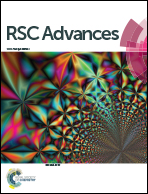Flow-induced structures observed in a viscoelastic reverse wormlike micellar system by magnetic resonance imaging and NMR velocimetry
Abstract
The aim of the present work is to illustrate and discuss an application of rheo-NMR techniques in the investigation of the flow micro-morphology of a rheo-thinning fluid. The viscoelastic material is composed by weakly hydrated nonionic Wormlike Micelles (WM), stabilized by the biocompatible phospholipid in an organic solvent (lecithin organogel). By applying rheo-NMR techniques, such as micro-imaging and flow velocimetry in Couette flow, to lecithin organogels in the concentrated isotropic phase, a new phase nucleating inhomogeneously at the inner rotating cylinder showing periodic fluctuations in space in some cases, has been identified for applied shear rates within the isotropic-nematic stress plateau. On the other hand, evident slippage phenomena have been found in flow regimes consistent with a full shear-induced nematic state. Bulk rheometric investigations executed in oscillatory, steady state and transient mode have been finally carried out to bridge different flow micro-heterogeneities detected by rheo-NMR with a variety of mechanical responses manifested by lecithin WM.



 Please wait while we load your content...
Please wait while we load your content...